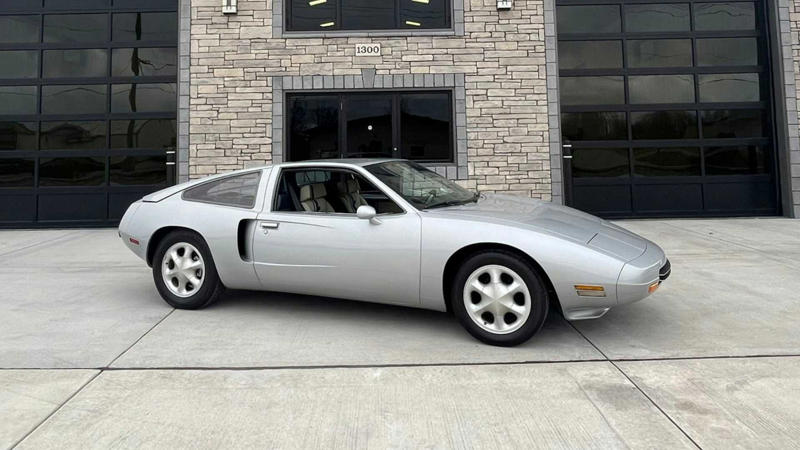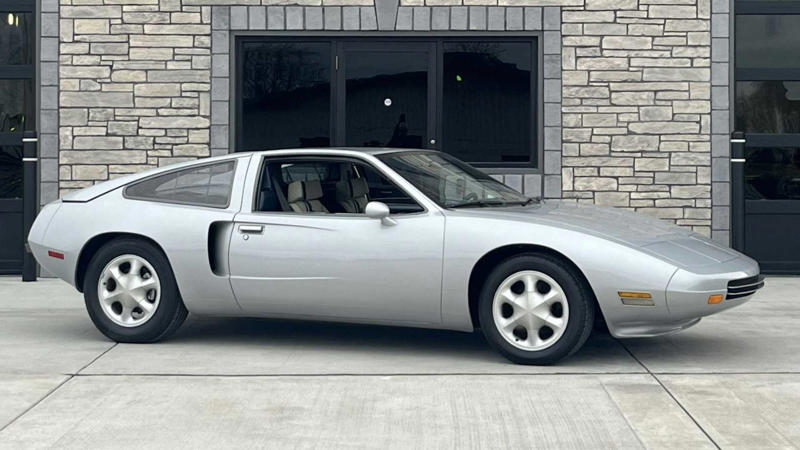America's Lost V8 Supercar Was Meant To be A Corvette Killer With A Chevy Heart
Quick Links
- America's Sports Car Landscape Of The Mid-1970s
- John Guanci And The Development Of The Guanci SJJ
When thinking about American sports cars, the Chevrolet Corvette is the first name that comes to mind: its place of pride in the US market has held steady for decades, seemingly uninterrupted. There have, however, been stages in history when the Corvette’s cultural power wasn’t so strong, with other cars threatening to steal its throne. In the mid-70s, as the Corvette struggled to find its place in a changing automotive landscape amid new environmental regulations, one man attempted to create something that would take its place: the Guanci SJJ, an experimental prototype dreamed up by a businessman with no automotive experience.
The SJJ did not make it to the production stage and, of course, never ended up taking the Corvette’s place. The few cars built were consigned to the archives of automotive history, and today even hardcore enthusiasts are unlikely to know of its existence. Let’s explore the unique history of this lost sports car.
Meet The Guanci SJJ

Guanci SJJ Exterior (16)
The Guanci SJJ In Numbers | |
Engine | 5.7-liter V8 / 3.8-liter turbocharged V6 |
Horsepower | 250 hp |
Transmission | 3-speed automatic |
0-60 mph | 10.9 seconds (V6 version) |
Top Speed | N/A |
The Guanci SJJ was built in 1979 and unveiled at the Chicago Auto Show in the same year. It was the brainchild of Chicago-based businessman John Guanci, who had no previous experience building cars but recruited a team of experienced designers and engineers to make his dream happen. The goal was to create a car that merged American power and dependability with the aesthetic design and driving characteristics of European cars.
The newly-assembled team at Guanci included race car constructor Bob McKee, automotive designer Mike Williams (who had previously worked with Chrysler), and fiberglass expert Steve Norcross. Thanks to Guanci’s investment, the team quickly began work on a prototype: Williams created a design inspired by iconic European sports cars, which Norcross translated into a concrete reality through the use of fiberglass molds.

Ferrari 308
How Long Will A Fiberglass Car Body Last?
If you're buying or building your own fiberglass car, here's how you can keep it looking good for years to come.
McKee, meanwhile, took care of the mechanical aspect, making sure the new creation was as fast and reliable as it was good-looking. Alessandro de Tomaso, famous for having founded the brand that brought us the Pantera and Mangusta, was also recruited in an unspecified consultant role.
The team worked around the clock to have a car ready in time for the Auto Show: in the end, two cars were able to be presented. When it came to choosing a name for the car, Guanci combined his family’s initials (his wife, Susan, and his children, John and Joseph), naming the car the SJJ. This also had the incidental effect of evoking the name of another iconic sports car from America’s automotive past: the Duesenberg SSJ, made famous by Hollywood actors Gary Cooper and Clark Gable.

Guanci SJJ Exterior (11)
However, despite enjoying good popularity with show-goers, the cars had an eye-watering price tag of $54,000, which is nearly $250,000 in today’s money. This made even deep-pocketed prospective buyers skeptical, since Guanci had no established reputation in the industry. The two prototypes presented in Chicago (plus a third car built in 1982) would remain the only Guanci SJJs in existence.
The Guanci SJJ's Design And Components

Guanci SJJ Exterior (15)
The team at Guanci may have designed the SJJ to beat the Corvette at its own game, but it did borrow its engine: more specifically, the optional 5.7-liter L82 V8 unit available in the third-generation ‘Vette. This engine produced 250 hp, and was installed in the first two SJJ prototypes to be built. For the third car, Guanci struggled to source another L82 engine, and opted for a 3.8-liter turbocharged V6 sourced from a Buick Riviera instead.
There isn't a large amount of in-depth information available about the mechanical aspect of the SJJ, but we do know it had a fully independent suspension with custom shocks. Aside from the L82 engine, it also borrowed a handful of other components from the Corvette, such as front uprights and brakes. It was, however, designed entirely from scratch, despite rumors stating it was based on other models such as the De Tomaso Pantera. The SJJ did take visual inspiration from several models of the era, but wasn’t fully based on any of them specifically.
What Happened To The Guanci SJJ?

Guanci SJJ Exterior (5)
Shortly after the Chicago Auto Show, the sudden death of one of John Guanci’s business partners gave a shock to the small company’s finances, putting it in an even more precarious position. At the same time, the American automotive industry struggled to find its feet among difficult economic circumstances, and no backers could be found for a V8-powered supercar that cost five times as much as a Corvette. The company’s last manufacturing effort would be the third SJJ prototype, completed three years after the first two.
One of the two prototypes exhibited in Chicago was bought on the spot by what would remain the company’s only customer, an unnamed visitor to the show. The other two remained with the Guanci family for decades; the V6-powered car was sold at auction in January this year for $27,285. The Buick engine, however, had been swapped out for an Oldsmobile L47 V8 unit, which powered the Oldsmobile Aurora and also produced 250 hp.

Hagerty Classics
How The Guanci SJJ Came To Be
The Guanci SJJ came about because of a unique combination of factors happening at the same time. The American automotive industry was going through a rough patch, while European sports cars were flourishing; Guanci’s newfound passion for cars and entrepreneurial spirit did the rest. Here is the background story that led to this one-of-a-kind creation.
America's Sports Car Landscape Of The Mid-1970s

Chevrolet-Corvette_C3-1968 sidelong red
The time period in which the Guanci SJJ emerged was defined by the American automotive industry as the “Malaise Era”: between the early 70s and the mid 80s, the industry was at a crossroads, adapting to new constraints regarding safety and environmental impact. The Corvette, which up until the early 70s had proudly held the title of America’s Sports Car, was going through a difficult period: the model’s third generation, the C3, was nearly a decade old, and new, stringent emissions regulations had lowered power outputs. A mid-engined, rotary-powered version was rumored to be in the works for a while, but nothing eventually came of it; it would be another four decades before a mid-engined Corvette would make an appearance on the market.

Corvette
The Chevrolet Corvette Is The Automotive Equivalent Of America's Fun-Loving Spirit
The American icon means much more to the United States than just being a cool sports car, and its roots run deeper than you think.
As both car enthusiasts and industry executives began to wonder what would fill the Corvette-shaped hole left in the market, one man stepped up to the challenge: he hadn’t sold or even built a single before, but did not see this as an obstacle in the slightest.
John Guanci And The Development Of The Guanci SJJ

Guanci SJJ Exterior (12)
The man responsible for the SJJ’s creation, John Guanci, did not have any previous experience building or selling cars at all. A businessman from the Chicago area, whose company at the time specialized in building industrial furnaces, Guanci first developed an interest in the world of cars during a passenger ride in a friend’s Pontiac Firebird Trans Am. After buying one of his own, he began to explore the world of European cars with his next purchase: a Lotus Elite (not to be confused with the Elise, which was still two decades away).
He set out to merge the American and European automotive worlds, setting up a brand new business in Woodstock, Illinois: Guanci Automobiles Inc. Of course, the story of Guanci Automobiles didn’t evolve as planned, with the company folding shortly after the three cars were built. The Guanci SJJ, however, still remains a testament to entrepreneurial spirit and automotive innovation; in this way, it has carved itself a place in American automotive history, however small.













































